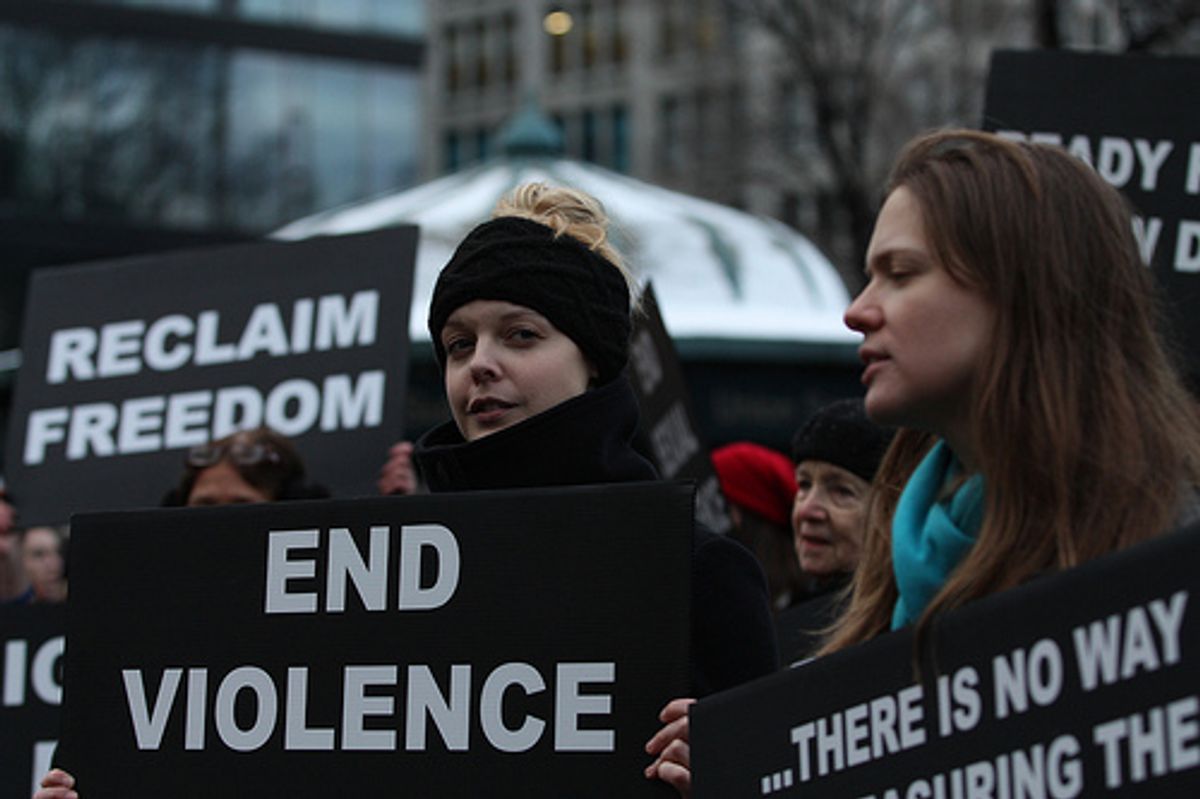If you frequent certain corners of the Internet, you may already be familiar with trigger warnings, which are sometimes attached to media that contain potentially upsetting content, including graphic depictions of sexual violence or other traumas.
The debate over their utility (or frivolity, according to some) didn't start with Jenny Jarvie's Tuesday piece in the New Republic, and it won't end there. Which is actually a good thing; these conversations are usually instructive, even for what they miss.
According to Jarvie, trigger warnings started harmlessly enough as an elective label used to identify uniquely graphic content, but have slowly morphed into a "cultural hypersensitivity to harm and a paranoia about giving offense" that now pose a threat to the free exchange of ideas in the press and across college campuses.
"As students introduce [trigger warnings] in college newspapers, promotional material for plays, even poetry slams, it's not inconceivable that they'll appear at the beginning of film screenings and at the entrance to art exhibits," Jarvie writes. "Will newspapers start applying warnings to articles about rape, murder, and war? Could they even become a regular feature of speech? 'I was walking down Main Street last night when -- trigger warning -- I saw an elderly woman get mugged.'"
She also points to a "growing" number of students who are "demanding trigger warnings on class content" as a slow creep toward academic censorship:
Many instructors are obliging with alerts in handouts and before presentations, even emailing notes of caution ahead of class. At Scripps College, lecturers give warnings before presenting a core curriculum class, the “Histories of the Present: Violence," although some have questioned the value of such alerts when students are still required to attend class. Oberlin College has published an official document on triggers, advising faculty members to "be aware of racism, classism, sexism, heterosexism, cissexism, ableism, and other issues of privilege and oppression," to remove triggering material when it doesn't "directly" contribute to learning goals and "strongly consider" developing a policy to make "triggering material" optional.
Jarvie may be correct to point out that the use of trigger warnings has gained some traction (though I think she overstates quite how much) in college classrooms and certain media outlets, but the use of such labels is still a relatively niche phenomenon. She's also right to be wary of schools willing to use trigger warnings as a blunt instrument to stop certain texts from being taught.
But the bigger truth, and what Jarvie doesn't really grapple with in her piece, is that trigger warnings are an imperfect but sometimes necessary band-aid on the open and gaping wounds plaguing college campuses -- rampant sexual violence, for starters. Singling out trigger warnings as the greater problem in need of addressing is, perhaps, missing the point.
Sexual violence on college campuses is an issue with unprecedented visibility right now, which could explain why the conversation about the warnings' use in classrooms is getting attention as well. Students who advocate for these warnings may see them as a nod toward compassion and accountability in a campus environment (and culture, in general) that could use a lot more of both -- and they're very likely correct in this.
There is plenty of room to debate the uses and consequences of applying trigger warnings to course material. Trauma responses are varied, complicated and often unpredictable; there is no fail-safe way to shield someone from such a response. But while we are talking about the potential limits of trigger warnings, we should also probably be discussing the context in which this is all playing out and address the steps college administrations can take to make their campus environments safer for students. As a friend remarked in a conversation about Jarvie's piece, students might be less inclined to request a trigger warning for "The Great Gatsby" if they felt confident that their school took seriously racist frat parties, epidemic rates of sexual violence, and persistent failures of accountability from administrators.
I don't agree that putting trigger warnings on course content is tantamount to censorship -- presumably, the materials would and should still be taught. But, to me, the larger issue here is that the students who can speak to the experiences of trauma represented in these texts may be withdrawing themselves from the conversation at a moment when their voices and perspectives are so necessary. While it isn't the responsibility of people who have been victims of sexual assault and other traumas to "educate" their classmates, their voices are a valuable part of classroom discussions. Creating a space where this can happen should be a priority for administrators and teachers. If trigger warnings are part of creating the space for that to happen, then why not include them? If taking steps toward structural accountability around these issues is another way of achieving that goal, all the better.
When it comes to trigger warnings, I tend to agree with Roxane Gay, who argued that they "might be ineffective, impractical and necessary for creating safe spaces all at once." I also agree with Gay that the "safety" they offer is illusory.
But I also realize that the way we talk about sexual violence today -- and the way we treat victims -- is deeply imperfect. Rather than take a blanket position against trigger warnings, maybe we can try to better understand what they can and can't do and acknowledge the deeper issues at play when students ask for safety and accountability.



Shares